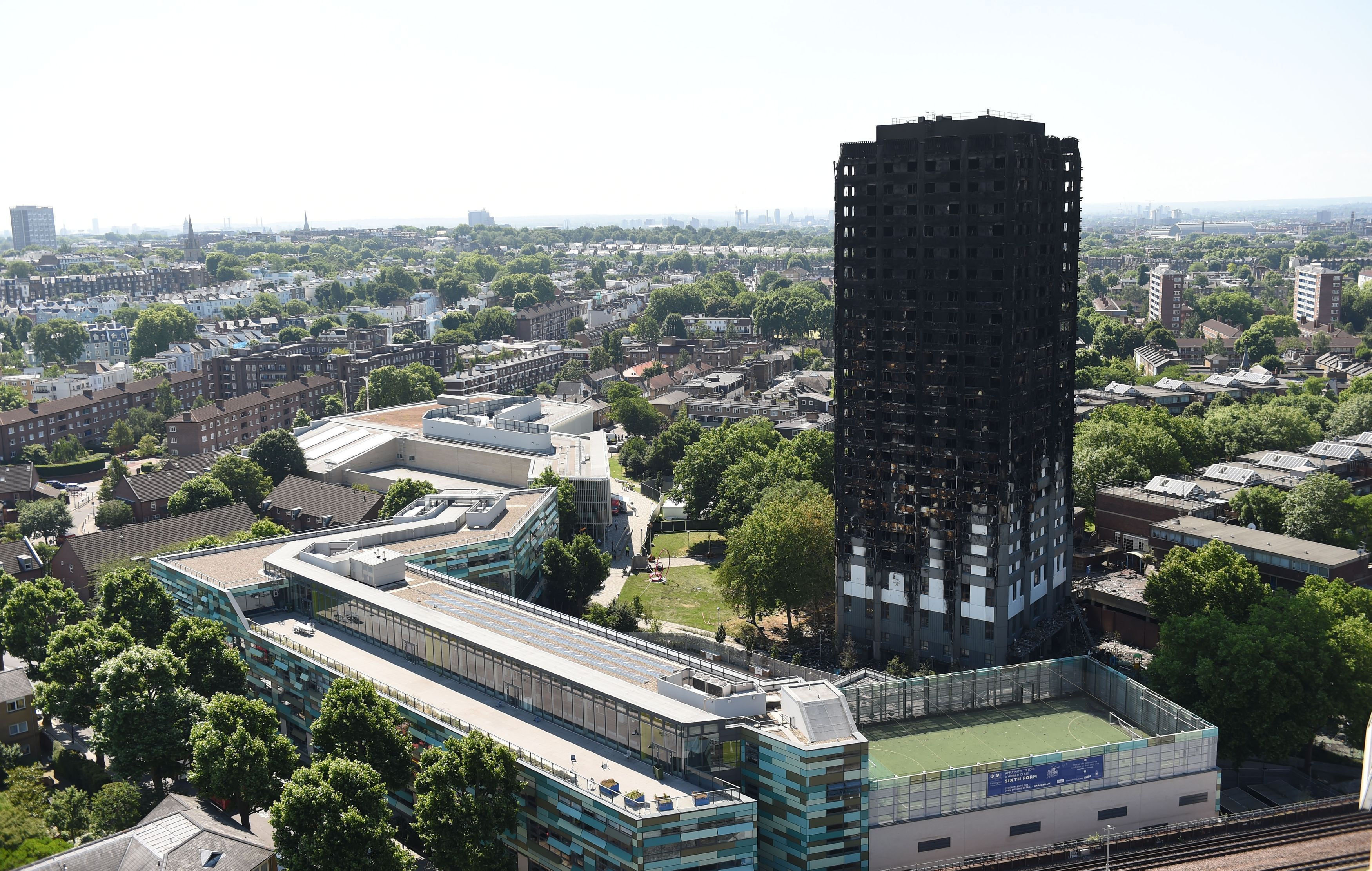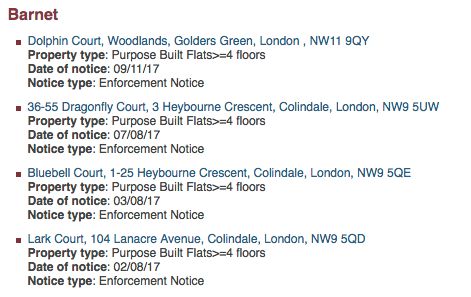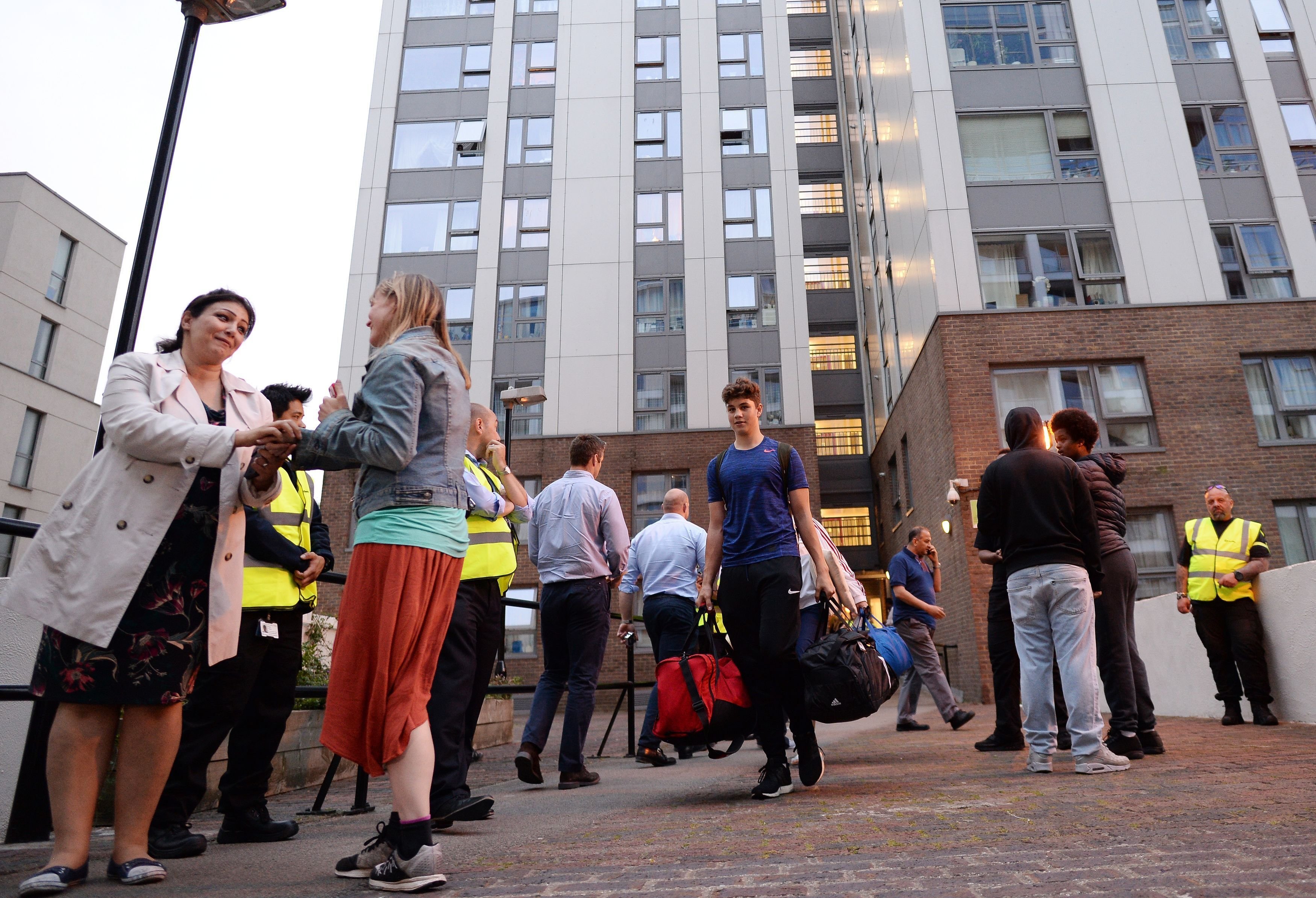
Nearly 100 towers and multi-storey apartment blocks in England and Wales have failed fire safety checks since the Grenfell Tower blaze, HuffPost UK can reveal, as experts call on the Government to reform systemic failures in fire safety laws.
In the wake of the disaster, inspectors have discovered residential buildings which have never had a mandatory fire risk assessment, contain limited escape routes and feature poorly-maintained safety equipment.
In total, 99 purpose-built blocks of four storeys or higher have been ordered to make improvements to safety since the west London tower blaze in June, which killed 71 people.
Of those buildings, 74 were in the capital, and followed a crackdown by London Fire Brigade in the aftermath of Grenfell.
The total has been calculated by HuffPost UK after examining rarely-publicised notices regarding residential buildings, published by all the fire services in England and Wales on their websites and the National Fire Chiefs Council site.
Outside the capital, high-rises in greater Manchester, Yorkshire and West Sussex were found to need safety improvements, according to the records. A riverside development in Sheffield failed on nine measures, including not preparing a risk assessment report.
They are failing from the design of buildings right the way through to the fire safety of an occupied building.
David Sibert, the Fire Brigades Union’s (FBU) fire safety advisor, told HuffPost UK that problems with safety laws were apparent throughout the system.
“They are failing from the design of buildings right the way through to the fire safety of an occupied building,” he said.
MP Emma Dent Coad, whose Kensington constituency includes Grenfell Tower, said: “The number of tower block which have failed fire safety checks since the Grenfell Tower fire is frightening and unforgivable.
“I have asked the secretary of state several times in parliament to implement the recommendations of the Lakanal House inquiry in advance of whatever the Hackitt Report recommends.
“We need action, not reviews, to keep people safe in their beds.”
RESIDENTIAL BLOCKS FAILING CHECKS IN LONDON
Barnet - 4
Brent - 5
Bromley - 1
Camden - 8
Croydon - 3
Greenwich - 1
Hackney - 4
Hammersmith and Fulham - 5
Haringey - 3
Havering - 1
Hounslow - 3
Islington - 3
Kensington and Chelsea - 1
Lambeth - 4
Lewisham - 2
Merton - 1
Newham - 1
Southwark - 8
Sutton - 3
Tower Hamlets - 5
Westminster - 8
OUTSIDE LONDON:
Hampshire - 2
Humberside - 1
Kent - 1
Lancashire - 2
Leicestershire - 3
Greater Manchester - 4
Merseyside - 1
South Yorkshire - 4
West Sussex - 2
West Yorkshire - 5
Fire safety experts say the total is higher than would be typical over that period, and have serious concerns about the system of self-regulation, fire service funding and over-lapping laws that cause confusion over responsibility.
There is also alarm that similar warnings were made after the Lakanal House fire in south-east London, which killed six people in 2009, where it was revealed no fire checks had been carried out.

Many other types of building, apart from the 99 identified high-rises, also failed audits, including those providing sleeping accommodation, such as hotels and nursing homes.
Multi-storey buildings deemed unsatisfactory included modern blocks and high-rises constructed in the 1960s, and were variously run by the private sector, social housing providers and councils.
Fire safety regulations are set down by a Regulatory Reform Order (RRO). Buildings that failed the tests under the RRO are in addition to more than 200 high-rise buildings where cladding was found to be a fire risk after specific tests were carried out in the aftermath of Grenfell.
But fire officers found problems beyond cladding, including one building - the Taplow tower - that failed on eight counts.
Towers on the Chalcots Estate in Camden, north London, fell foul after the borough council ordered “enhanced” checks from the fire brigade.
MOST COMMON FAULTS FIRE SERVICES FOUND
- Failure to make a fire risk assessment, and keep it regularly updated.
- A lack of clearly indicated emergency routes and exits.
- Not taking any general fire precautions.
- Not providing adequate fire separation between rooms and floors.
In 2006, laws were introduced that meant owners of residential buildings became responsible for assessing fire risk, shifting responsibility away from the state and the fire services.
Landlords have to carry out a fire risk assessment, or license a company to carry one out for them. There are no formal qualifications or accreditations required to do the assessments.
If buildings fail to comply with regulations set down by the Regulatory Reform Order, fire authorities issue enforcement, alteration or prohibition notices when they carry out periodic checks.
Whether a building is safe after a refurbishment, such as if cladding was fitted, is not covered by the order but building regulations instead.
In 2011, the managing agent of a block of flats in London was fined £100,000 after failing to make ordered improvements.
As reported previously by HuffPost UK, experts fear a combination of austerity and the slashing of red tape has rendered the system of self-regulation “pretty much useless” because of problems with enforcement. A HuffPost analysis found fire service checks are carried out on less than one in 20 at-risk buildings each year, reflecting the limited resources fire services say they have at their disposal.

The problem is not lost on the Government. Ministers are concerned the system is failing tenants and ordered an independent review of fire safety laws and building regulations after Grenfell.
In December, the review’s interim findings suggested landlords and contractors take “shortcuts” and laws are “not fit for purpose”.
Dame Judith Hackitt, the former chair of the Health and Safety Executive, who is leading the Grenfell fire review, said she was “shocked” by some of the practices she encountered.
“The mindset of doing things as cheaply as possible and passing on responsibility for problems and shortcomings to others must stop,” she said.
The FBU’s Sibert believes the number of notices issued since Grenfell is a result of more in-depth inspections on tower blocks because of fears over cladding, and inspectors “finding problems that fire assessors had missed”.
“Post-Grenfell, what fire services are wanting to do deliberately is lay down an audit trail for themselves, especially in the case of a brigade like London and because of Grenfell,” he said.
Sibert has long raised fears over lax fire safety rules, adding that “there are people that knew all along that standards in fire safety were declining” and that the “rot set in” when new legislation was introduced under the Labour government.
“That was at the same time as local government budgets were cut, and that meant fire service budgets were being cut,” he said, adding fire safety posts were more at risk than officers manning fire engines.
“Slowly but surely over the years standards have fallen. People like me, who are a bit long in the tooth, have realised standards have fallen. People who are new to fire safety don’t know that because they don’t know any better.”
He contends that the gradual fall in the number of fire-related deaths has provided cover to cut fire safety budgets.
However, Sibert says the decline in fires is because of a drop in the number of sources of fire - such as fewer people smoking in their homes - and points to the cost of fires outstripping inflation, indicating how damaging they remain.
Slowly but surely over the years standards have fallen.
Private sector assessors who largely carry out fire risk assessments on larger buildings are not the problem, he says, more that the fire service lacks the resource to “check the ones who are not doing it or doing it badly”.
Sibert also has fears over the guidance building owners are given and argues there should be a register for professional fire assessors carrying out work on complicated buildings.
Since the Grenfell blaze, London Fire Brigade has urged landlords to ensure they have have up-to-date fire risk assessments in place, especially if they had made changes to their buildings.

In its submission to the Hackitt review, the LFB warns of a “decline in competency and skills” in the fire safety sector “particularly in the last five years”, and says people in control of buildings often do not understand what fire safety measures are in place “let alone how best to maintain them”.
Assistant Commissioner for Fire Safety, Dan Daly, said: “This means that potentially dangerous design flaws could exist within a building until we either find it at a later date, or in the worst case scenario, it is exposed by a serious fire.
“We don’t have the legal powers or the resources to check the entire fabric of a building but we often uncover dangerous flaws that we can’t ignore.”
A Home Office spokesperson said fewer high rises being inspected were deemed unsatisfactory in 2016-17 compared to five years earlier. Official figures covering the period following the Grenfell blaze are to be published in autumn.
He said: “Fire and rescue services have the resources they need to do their important work.
“It is the responsibility of each fire and rescue service to assess the risks in its area and determine how best to allocate its resources effectively This includes deciding on the number of fire safety officers needed to deliver their fire safety enforcement duties under the Fire Safety Order.
“There were around 54,000 fire safety audits carried out by FRSs in England in 2016/17. Of these around 5.5 percent were in purpose built flats of four storeys or more.”




0 comments:
Post a Comment
Note: Only a member of this blog may post a comment.